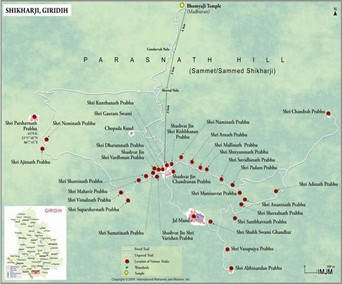Sacred Jharkhand Hill Sparks Jain-Santal Tenasions
Sacred Jharkhand Hill Sparks Jain-Santal Tensions
Why in the News ?
On May 3, the Jharkhand High Court directed enforcement of a meat and alcohol ban on Parasnath/Marang Buru hill, considered sacred by both Jain and Santal communities, reigniting a long-standing dispute over religious rights and customary practices.
Historical and Legal Disputes:
- The dispute dates back to 1911, when Jains challenged the Sendra festival (a ritual hunt by Santal men) in court.
- Courts, including the Privy Council, upheld Santals’ customary rights to hunt, rejecting Jain objections.
-
After Independence, Santals’ rights eroded—especially post-1972 Wildlife Protection Act and loss of Fifth Schedule status, which protected tribal land rights.
Recent Developments and Legal Orders
- In 2023, the Environment Ministry ordered a 25 km no-meat/alcohol zone, covering 99 tribal villages.
- A Jharkhand HC order in 2024 mandated enforcing this directive, sparking backlash from Santal communities.
- Despite restrictions, Sendra festival was recently celebrated.
-
A Santal body has filed a counter-petition asserting their traditional religious rights over the hill.
About Sacred Significance of the Hill:● Known as Parasnath to Jains and Marang Buru to Santals, the hill in Giridih district holds deep spiritual value. ● Jains believe 20 of 24 Tirthankaras, including Parshvanatha, attained nirvana here; over 40 temples exist on the hill. ● For Santals, Marang Buru is their supreme deity; the Jug Jaher Than and Dishom Manjhi Than are key religious sites for rituals and tribal governance. ● The hill was the birthplace of the 1855 Santal Hul rebellion, launched from the Lo Bir Baisi tribal council. About Marang Buru:● Known as the “Great Mountain” in the Santal religion. ● It is the most sacred site for their animist practices. ● Hosts the Jug Jaher Than and Dishom Manjhi Than, crucial for rituals and leadership. ● Venue of the 1855 Santal Hul rebellion launch. Jains: ● Followers of Jainism, an ancient Indian religion emphasizing non-violence and spiritual discipline. ● Revere Parasnath Hill for its association with Tirthankaras’ liberation. ● Maintain a strict vegetarian lifestyle. ● Oppose hunting and meat consumption near Parasnath due to its sacred status. Key facts: Santals ● One of India’s largest Adivasi (tribal) communities, with a rich animist tradition. ● Worship Marang Buru as their supreme deity. ● Celebrate Sendra festival, a ritual hunt, on the sacred hill. ● Assert customary rights over forest and ritual spaces. About Sendra Festival: ● Annual three-day hunting festival celebrated by Santal men. ● Symbolizes courage, masculinity, and tribal renewal. ● Conducted in the forests of Marang Buru. ● Long opposed by Jains for its clash with their non-violence beliefs, creating legal and cultural tensions. Key points: Fifth Schedule ● Part of the Indian Constitution, it provides safeguards for Scheduled Tribes in certain areas. ● Offers land and forest rights, autonomy in governance, and cultural protection. ● Areas around Marang Buru lost this status post-1972, impacting tribal control and practices. About Wildlife Protection Act (1972): ● Enacted to protect India’s wildlife and ecosystems. ● Imposed restrictions on hunting and forest use. ● Affected Adivasi practices, especially the Sendra hunt. ● Contributed to the erosion of tribal rights over traditional sacred landscapes like Marang Buru. |




